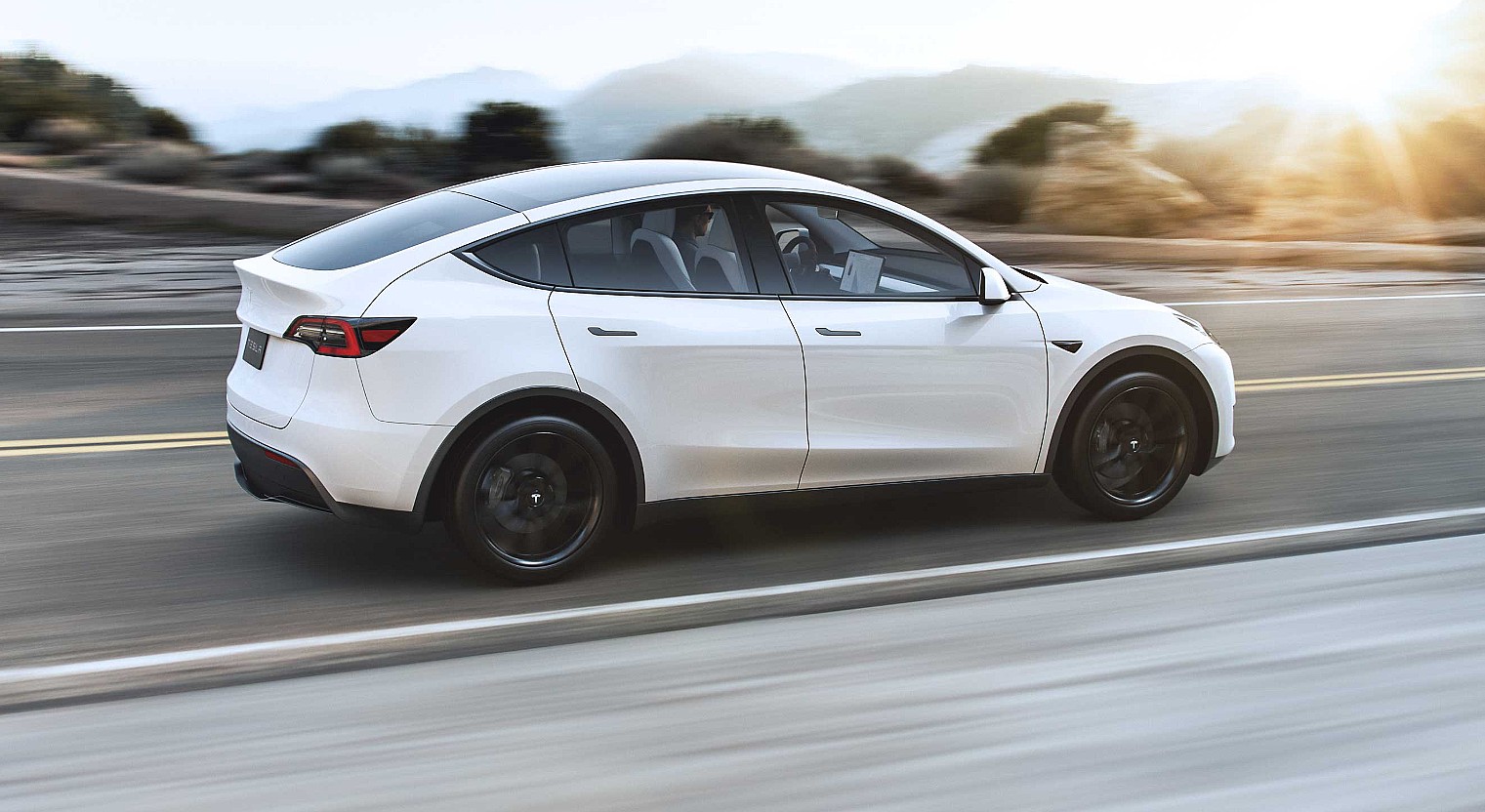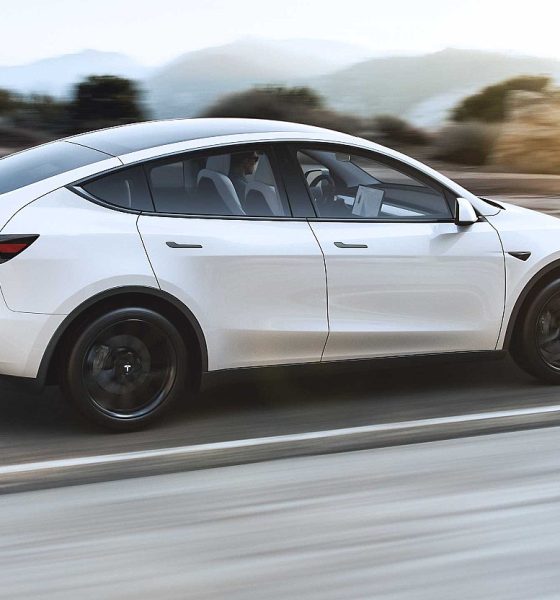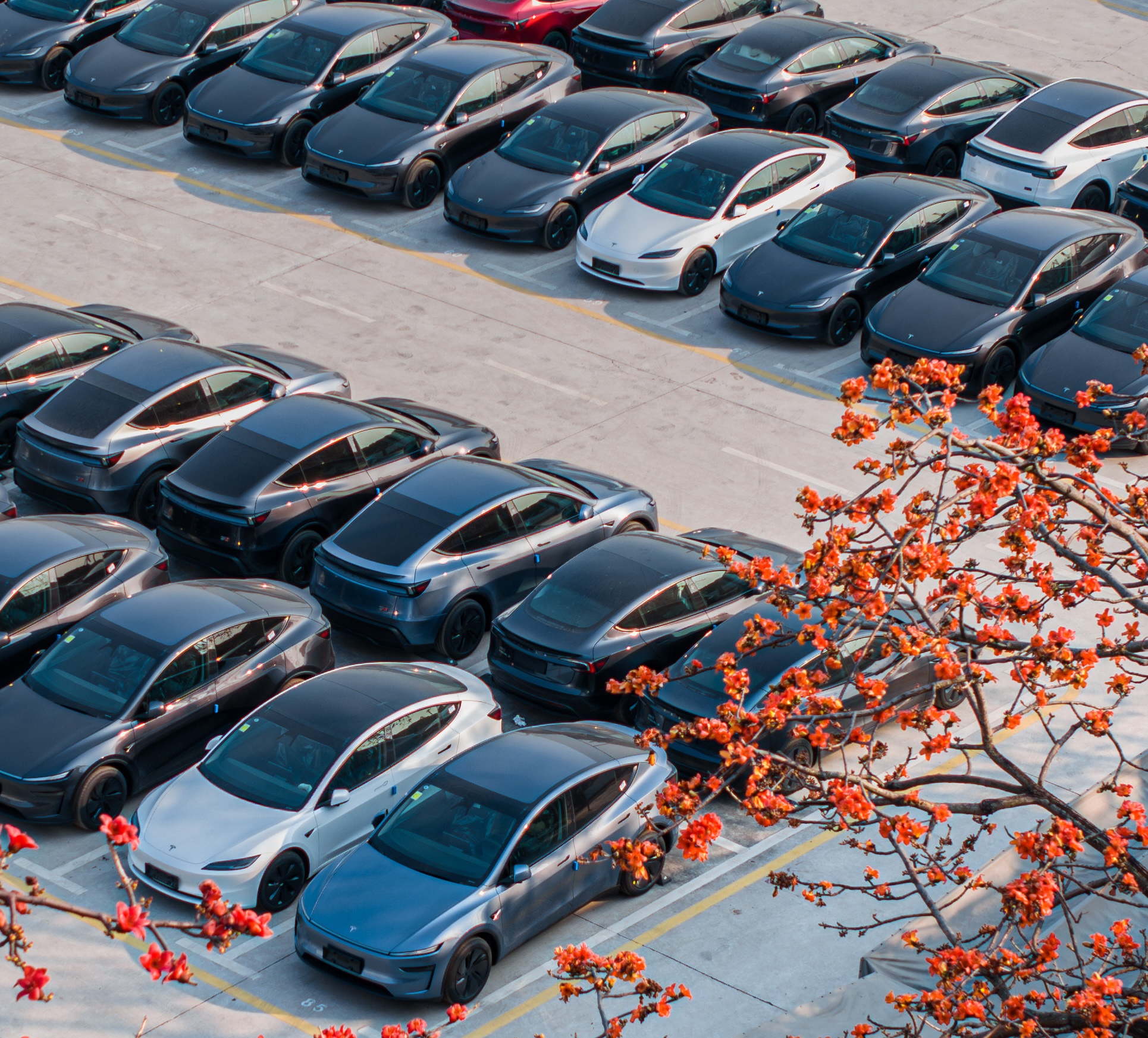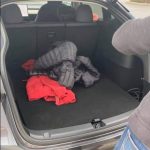

News
Tesla Model Y completes the equation for the average household
Tesla Model Y’s performance and practicality will complete the equation for households in the US, China, and beyond.
In the United States, demand for crossovers has increased over the last two decades. Crossovers only accounted for about 4% of vehicle sales in 2000 and meteorically rose to roughly 40 percent of US sales in 2018. In China, the biggest automotive market in the world, the picture is basically the same as more people veer away from light vehicles and go for crossovers and SUVs. Tesla will answer the need of households for a vehicle that presents a good balance between a sedan and an SUV.
The Model Y makes sense for families looking for a bigger ride (but not as big as full-sized SUVs) that offers more space for people and cargo while not burning a big hole in one’s bank account. The Model Y is perfect for families leading an active lifestyle or for those looking for a second vehicle that complements their daily driver such as a Model 3. The Model Y is not just a chunkier Model 3. The electric crossover answers these needs of the average household and has the potential to become another cash cow for Tesla to help it achieve consistent profitability.
Tesla Model Y’s range and efficiency were highlighted during the Q4 2019 earnings call of the Silicon Valley-based electric carmaker. CEO Elon Musk told the electric vehicle community that the Model Y now boasts the highest energy efficiency rating among electric SUVs at 4.1 miles per kWh and has an EPA rating of 315 miles on a single charge. Tesla has started limited volume production in January and expects to make first deliveries of the electric crossover on March 15.
“…make sure we get that production ramp going and reach volume production as soon as possible with Model Y. Yes, go as fast we can with Model Y and make sure it’s a great product. I think there are some things that will differentiate it. I think… when people do a teardown of the Model Y, I think they will be impressed about some of the things they see,” Musk said during the Q4 2019 earnings call.
While a Model Y teardown is still a long shot, the latest sightings of the much-awaited electric crossover show why the vehicle can be a practical choice for people on the go or families with an active lifestyle.
Tesla Model Y Roof Rack
A Tesla Model Y with roof rack was recently spotted along the State Route 237 in Sunnyvale, California. The sighting gives Model Y fans a glimpse of how roof-mounted rails will look on the electric crossover.
The video posted by RKT on YouTube shows a roof rack that reminds one of the currently available Model 3 roof rack that can easily be installed by securing four mounting points on the all-glass roof of the vehicle. With the Model Y sharing roughly 75% of its DNA with the Model 3, there’s a high possibility that a similar roof rack for the Model Y will be sold by Tesla.
With a roof rack, the Model Y can be a perfect road trip vehicle for a group of five or even seven bringing bikes, skis, other sports gear, or cargo boxes. The average maximum load rating or roof racks is around 150 lbs.
Check out RTK’s video of the Model Y with a roof rack:
Tesla Model Y Towing
Last December, a Tesla Model Y with a clearly visible tow hitch was spotted hinting that the all-electric crossover would be perfect for towing small trailers or campers for families who love the outdoors.
Just last week, another Model Y was seen on the road, this time towing a dirt bike. An image originally captured by Rober Rorschach was shared on Twitter by @Testletter.
Model Y towing a dirt bike. I think the towing package is going to come standard in the Model Y (at least in LR versions)
📷: Robert Rorschach https://t.co/fpFyxoaWlK thanks @AnythingTesla for the tip! pic.twitter.com/r7SfLd78px
— Tesletter (@tesletter) February 21, 2020
This is another great demonstration of how the upcoming electric crossover is ideal for people who lead an active lifestyle. It is not yet confirmed if the Model Y will come standard with a tow hitch or if it will come as an option but it is a clear indication that Tesla’s testing such feature and it knows how the crossover could be used by the electric vehicle community. Model 3 in Europe comes with an option for a tow hitch but this option is not available in North America.
Tesla Model Y Spacious Trunk Storage
It has been highlighted how Tesla seems to haven been underpromising and overdelivering when it comes to Model Y and this strategy can clearly upset the naysayers of the electric carmaker. The Model Y, according to Tesla will have higher gross margins than Model 3 and Elon Musk even predicts that it can outsell its other vehicles in the lineup. And with Model Y sightings slowly revealing the details of how the vehicle can be so useful for people. The 2nd-row seats that can be individually folded are a stroke of design genius in terms of practicality but it can be clearly seen now that Tesla paid attention to the details that matter most to consumers.
New Model Y images that surfaced over the weekend show that the Model Y also offers generous space in its trunk and there could also be additional space under the main trunk. The order page on the Tesla website indicates that the vehicle will have a max cargo volume of 66 cu.ft. making it comparable to the amount of cargo the more affordable Honda CR-V can carry and offers a bit more space than its touted rival Ford Mustang Mach-E that comes with 59.6 cubic feet of room.
Below are the images of the Model Y trunk first posted by Thomas Andre Davik on the Tesla Model Y Enthusiast Facebook Page and the extra storage below the main trunk photo by Josh Jones on the same fan page:
- Tesla Model Y trunk (Source: Thomas Andre Davik | Model Y Enthusiast Facebook Page)
- Tesla Model Y extra storage under main trunk(Source: Josh Jones | Model Y Enthusiast Facebook Page)
The latest images also clearly show that the second-row seats offer generous headroom and that the spacious trunk can easily be reconfigured to give enough space for the third-row seats to allow the vehicle to carry seven adults. And that is another practicality factor that can help the Model Y stand tall against its rivals.

News
Tesla dominates in the UK with Model Y and Model 3 leading the way

Tesla is dominating in the United Kingdom so far through 2025, and with about two weeks left in the year, the Model Y and Model 3 are leading the way.
The Model Y and Model 3 are the two best-selling electric vehicles in the United Kingdom, which is comprised of England, Scotland, Wales, and Northern Ireland, and it’s not particularly close.
According to data gathered by EU-EVs, the Model Y is sitting at 18,890 units for the year, while the Model 3 is slightly behind with 16,361 sales for the year so far.
The next best-selling EV is the Audi Q4 e-tron at 10,287 units, lagging significantly behind but ahead of other models like the BMW i4 and the Audi Q6 e-tron.
GOOD NEWS 🇬🇧 Tesla is absolutely crushing the UK electric vehicle market in 2025 💥
The numbers are in, and the dominance is clear. With an impressive amount of 42,270 vehicles delivered year-to-date, the brand now commands a solid 9.6% market share of the total auto market 🆒… pic.twitter.com/dkiGX9kzd0
— Ming (@tslaming) December 18, 2025
The Model Y has tasted significant success in the global market, but it has dominated in large markets like Europe and the United States.
For years, it’s been a car that has fit the bill of exactly what consumers need: a perfect combination of luxury, space, and sustainability.
Both vehicles are going to see decreases in sales compared to 2024; the Model Y was the best-selling car last year, but it sold 32,610 units in the UK. Meanwhile, the Model 3 had reached 17,272 units, which will keep it right on par with last year.
Tesla sold 50,090 units in the market last year, and it’s about 8,000 units shy of last year’s pace. It also had a stronger market share last year with 13.2 percent of the sales in the market. With two weeks left in 2025, Tesla has a 9.6 percent market share, leading Volkswagen with 8 percent.
The company likely felt some impact from CEO Elon Musk’s involvement with the Trump administration and, more specifically, his role with DOGE. However, it is worth mentioning that some months saw stronger consumer demand than others. For example, sales were up over 20 percent in February. A 14 percent increase followed this in June.
News
Tesla Insurance officially expands to new U.S. state
Tesla’s in-house Insurance program first launched back in late 2019, offering a new way to insure the vehicles that was potentially less expensive and could alleviate a lot of the issues people had with claims, as the company could assess and repair the damage itself.

Tesla Insurance has officially expanded to a new U.S. state, its thirteenth since its launch in 2019.
Tesla has confirmed that its in-house Insurance program has officially made its way to Florida, just two months after the company filed to update its Private Passenger Auto program in the state. It had tried to offer its insurance program to drivers in the state back in 2022, but its launch did not happen.
Instead, Tesla refiled the paperwork back in mid-October, which essentially was the move toward initiating the offering this month.
BREAKING: Tesla Insurance has just officially launched in Florida.
This is the first new state to receive @Tesla Insurance in more than 3 years. In total, Tesla insurance is now available in 13 U.S. states (map in thread below of all the states).
Tesla Insurance in Florida uses… pic.twitter.com/bDwh1IV6gD
— Sawyer Merritt (@SawyerMerritt) December 17, 2025
Tesla’s in-house Insurance program first launched back in late 2019, offering a new way to insure the vehicles that was potentially less expensive and could alleviate a lot of the issues people had with claims, as the company could assess and repair the damage itself.
It has expanded to new states since 2019, but Florida presents a particularly interesting challenge for Tesla, as the company’s entry into the state is particularly noteworthy given its unique insurance landscape, characterized by high premiums due to frequent natural disasters, dense traffic, and a no-fault system.
Annual average premiums for Florida drivers hover around $4,000 per year, well above the national average. Tesla’s insurance program could disrupt this, especially for EV enthusiasts. The state’s growing EV adoption, fueled by incentives and infrastructure development, aligns perfectly with Tesla’s ecosystem.
Moreover, there are more ways to have cars repaired, and features like comprehensive coverage for battery damage and roadside assistance tailored to EVs address those common painpoints that owners have.
However, there are some challenges that still remain. Florida’s susceptibility to hurricanes raises questions about how Tesla will handle claims during disasters.
Looking ahead, Tesla’s expansion of its insurance program signals the company’s ambition to continue vertically integrating its services, including coverage of its vehicles. Reducing dependency on third-party insurers only makes things simpler for the company’s automotive division, as well as for its customers.
News
Tesla Full Self-Driving gets sparkling review from South Korean politician
“Having already ridden in an unmanned robotaxi, the novelty wasn’t as strong for me, but it drives just as well as most people do. It already feels like a completed technology, which gives me a lot to think about.”

Tesla Full Self-Driving got its first sparkling review from South Korean politician Lee So-young, a member of the country’s National Assembly, earlier this week.
Lee is a member of the Strategy and Finance Committee in South Korea and is a proponent of sustainable technologies and their applications in both residential and commercial settings. For the first time, Lee was able to utilize Tesla’s Full Self-Driving technology as it launched in the country in late November.
Her thoughts on the suite were complimentary to the suite, stating that “it drives just as well as most people do,” and that “it already feels like a completed technology.”
드디어 오늘, 서울에서 테슬라 FSD 체험 했습니다.
JiDal Papa님의 모델S 협찬에 힘입어^^ 파파님 정말 감사합니다.
국회 -> 망원시장 -> 홍익대 -> 국회 복귀 코스였고요.
이미 무인 로보택시를 타봐서 그런지 신기함은
덜했지만, 웬만한 사람만큼 운전을 잘하네요.이미 완성된 기술이라고… pic.twitter.com/8pAidHBpRG
— 이소영 국회의원 (Soyoung Lee) (@im_soyounglee) December 17, 2025
Her translated post says:
“Finally, today I got to experience Tesla FSD in Seoul. Thanks to the Model S sponsored by JiDal Papa^^, I’m truly grateful to Papa. The route was from the National Assembly -> Mangwon Market -> Hongik University -> back to the National Assembly. Having already ridden in an unmanned robotaxi, the novelty wasn’t as strong for me, but it drives just as well as most people do. It already feels like a completed technology, which gives me a lot to think about. Once it actually spreads into widespread use, I feel like our daily lives are going to change a lot. Even I, with my license gathering dust in a drawer, don’t see much reason to learn to drive a manual anymore.”
Tesla Full Self-Driving officially landed in South Korea in late November, with the initial launch being one of Tesla’s most recent, v14.1.4.
It marked the seventh country in which Tesla was able to enable the driver assistance suite, following the United States, Puerto Rico, Canada, China, Mexico, Australia, and New Zealand.
It is important to see politicians and figures in power try new technologies, especially ones that are widely popular in other regions of the world and could potentially revolutionize how people travel globally.










